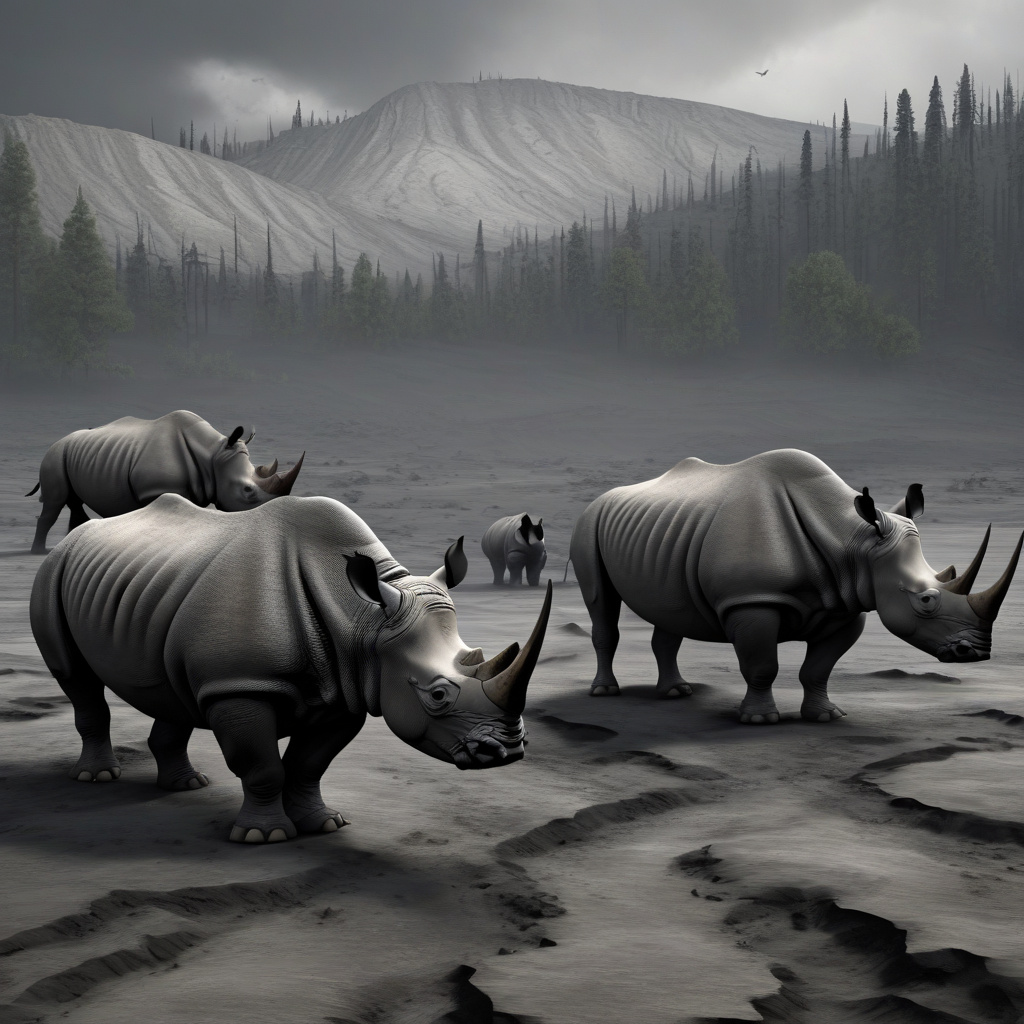Ancient Rhino Herd Preserved in Ash After Yellowstone’s Eruption 12 Million Years Ago
About 12 million years ago, huge herds of rhinos roamed the lands of North America. These majestic creatures, ancestors of the modern-day rhinoceros, lived in harmony with the environment until a catastrophic event changed their fate forever. The eruption of the Yellowstone volcano covered the region in ash, entombing an entire rhino herd and preserving them in astonishing detail for millions of years.
The discovery of this ancient rhino herd provides a unique glimpse into the past, offering valuable insights into the behavior, anatomy, and lifestyle of these prehistoric giants. Paleontologists and researchers have been able to study the remains of these ancient rhinos, unraveling mysteries that have remained buried for millions of years.
One of the most fascinating aspects of this discovery is the level of preservation of the rhino herd. The ash from the Yellowstone eruption acted as a natural preservative, protecting the remains of these creatures from decay and scavengers. As a result, scientists have been able to uncover complete skeletons, soft tissues, and even traces of the rhinos’ last meals, providing a wealth of information about their diet and habits.
Studying the ancient rhino herd has also shed light on the ecosystem of North America during the Miocene epoch. By analyzing the plant material found in the stomachs of the rhinos, researchers have been able to reconstruct the vegetation that covered the region millions of years ago. This information is crucial for understanding how the environment has evolved over time and how it may continue to change in the future.
Furthermore, the discovery of the preserved rhino herd highlights the importance of natural disasters in shaping the course of evolution. While the Yellowstone eruption had devastating effects on the local wildlife, it also created unique opportunities for preservation and study. By studying the remains of the rhino herd, scientists can gain a better understanding of how organisms respond to catastrophic events and how they adapt to changing environments.
In addition to its scientific value, the ancient rhino herd serves as a reminder of the fragility of life and the resilience of nature. Despite facing extinction due to a catastrophic event, these rhinos have managed to leave a lasting legacy that continues to inspire and awe researchers and enthusiasts alike.
As we delve deeper into the story of the ancient rhino herd preserved in ash after Yellowstone’s eruption 12 million years ago, we are reminded of the power of nature to both destroy and create. Through careful study and analysis, we can uncover the secrets of the past and gain a deeper appreciation for the world we live in today.
#RhinoHerd, #YellowstoneEruption, #AncientPreservation, #PaleontologicalDiscovery, #PrehistoricWildlife












